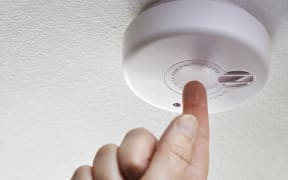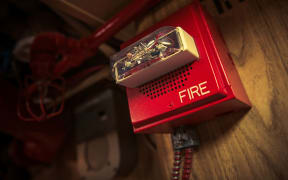Major retailers have decided not to stock ionisation smoke alarms after testing showed they give much less warning of smouldering fires, a consumer watchdog says.
A Consumer NZ report on smoke alarms prompted the watchdog to ask retailers to pull them from their shelves.

Major DIY stores are either stopping the sale of ionisation alarms immediately or once existing stock is sold, Consumer NZ says. Photo: 123RF
The organisation said major DIY stores have agreed, with Mitre 10 and Hammer Hardware deciding to cease selling them immediately.
Bunnings and PlaceMakers said they would no longer stock them after existing alarms were sold.
Tests on ionisation alarms showed they gave much less warning of smouldering fires, such as those caused by faulty electrical wiring, curtains draped over a heater, or a hot ember igniting upholstery foam.
Consumer NZ head of testing Dr Paul Smith said that made it less likely occupants could get out of their home safely.
"While ionisation alarms were fine and fast at responding to flaming fires, they were very slow at responding to the cooler, slower, smouldering type that generates a lot of smoke," he said.
"It raised the question - why are they still on the market when they obviously don't respond quickly enough to a certain type of fire, the type of fire that can happen overnight in a house.
"So we contacted the retailers who were selling the alarms and asked them to take them off the shelves - and they all did.
"We're really happy with their response, it makes the choice for consumers going in to buy smoke alarms a lot simpler."
But he said householders and landlords should not remove ionisation alarms - as any alarm is better than none.
"You can identify an ionisation alarm from a radioactive symbol somewhere on the alarm body - it may be underneath, so you might need to remove it to check."
He advised people with ionisation alarms to add photoelectric models, at least in hallways and escape routes.
Another advantage of photoelectric models was that many had a built-in long-life battery, he said.
Advice on smoke alarms:
- Not to remove working ionisation alarms - any alarm is better than no alarm
- If only ionisation alarms are fitted, you should also fit photoelectric models at least in hallways and escape routes
- Landlords have to ensure working smoke alarms are installed at the start of a tenancy. Existing ionisation alarms can stay where they are, but all new smoke alarms must be photoelectric models with a long-life battery
- Tenants must not remove smoke alarms, and are responsible for replacing dead batteries




